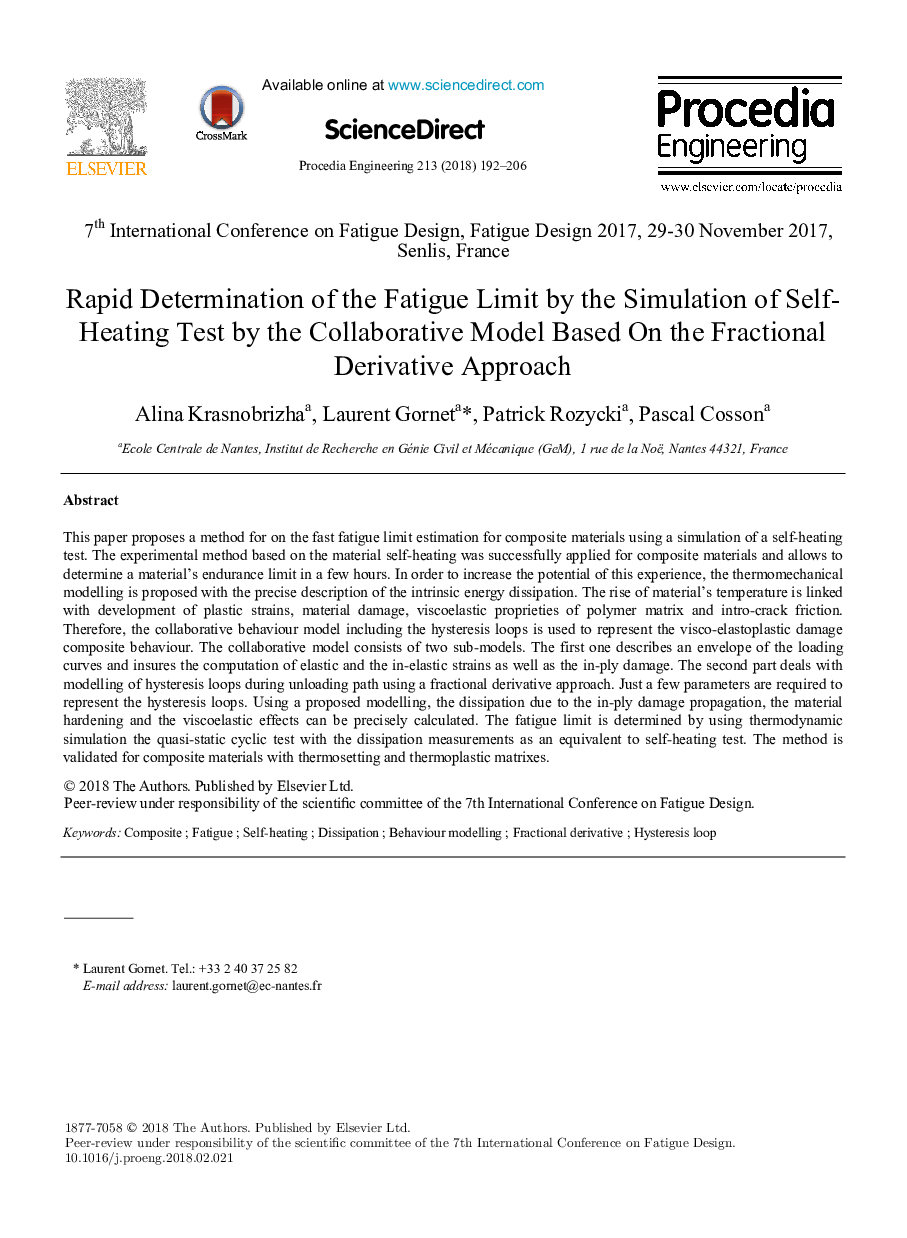| Article ID | Journal | Published Year | Pages | File Type |
|---|---|---|---|---|
| 7225506 | Procedia Engineering | 2018 | 15 Pages |
Abstract
This paper proposes a method for on the fast fatigue limit estimation for composite materials using a simulation of a self-heating test. The experimental method based on the material self-heating was successfully applied for composite materials and allows to determine a material's endurance limit in a few hours. In order to increase the potential of this experience, the thermomechanical modelling is proposed with the precise description of the intrinsic energy dissipation. The rise of material's temperature is linked with development of plastic strains, material damage, viscoelastic proprieties of polymer matrix and intro-crack friction. Therefore, the collaborative behaviour model including the hysteresis loops is used to represent the visco-elastoplastic damage composite behaviour. The collaborative model consists of two sub-models. The first one describes an envelope of the loading curves and insures the computation of elastic and the in-elastic strains as well as the in-ply damage. The second part deals with modelling of hysteresis loops during unloading path using a fractional derivative approach. Just a few parameters are required to represent the hysteresis loops. Using a proposed modelling, the dissipation due to the in-ply damage propagation, the material hardening and the viscoelastic effects can be precisely calculated. The fatigue limit is determined by using thermodynamic simulation the quasi-static cyclic test with the dissipation measurements as an equivalent to self-heating test. The method is validated for composite materials with thermosetting and thermoplastic matrixes.
Keywords
Related Topics
Physical Sciences and Engineering
Engineering
Engineering (General)
Authors
Alina Krasnobrizha, Laurent Gornet, Patrick Rozycki, Pascal Cosson,
